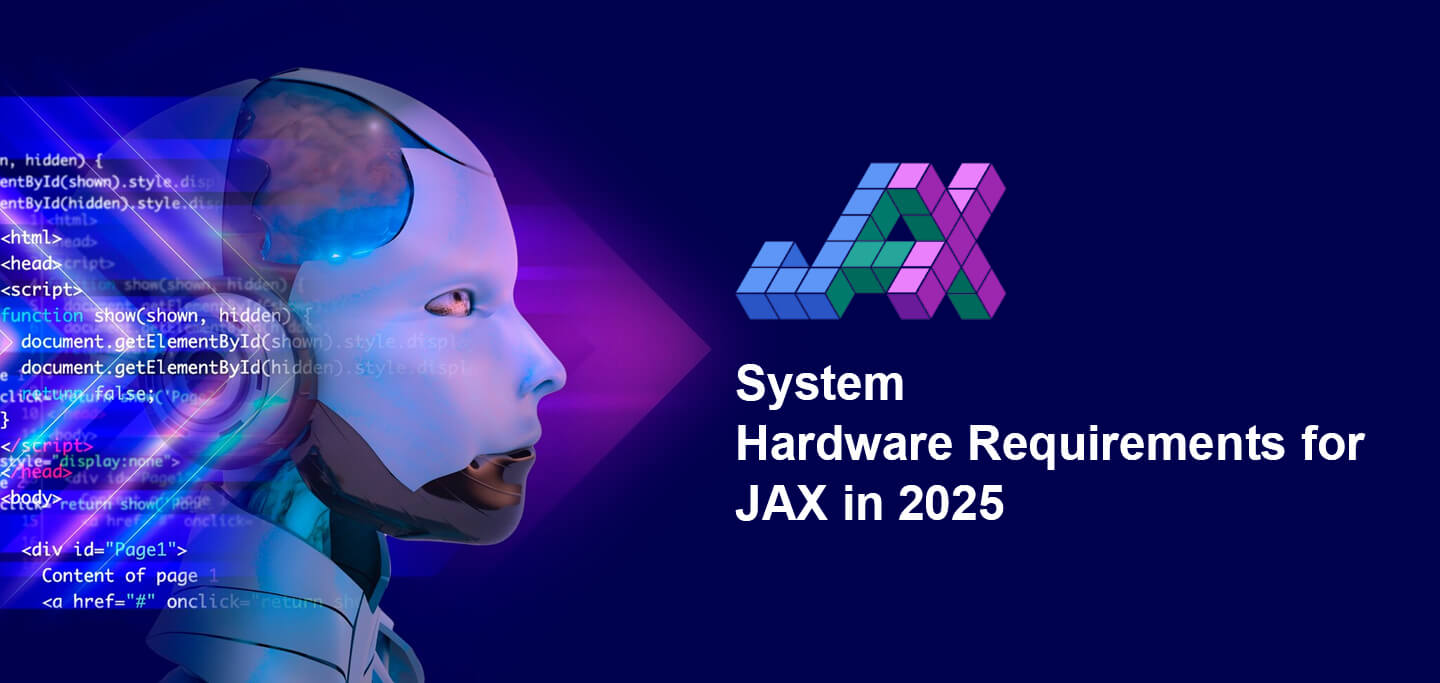For Professionals, By Professionals

Discover ProX PC for best custom-built PCs, powerful workstations, and GPU servers in India. Perfect for creators, professionals, and businesses. Shop now!
SERVICES
WE ACCEPT










Introduction
JAX is a high-performance Python library for numerical computing and machine learning, known for its ability to accelerate linear algebra operations and support automatic differentiation. As we approach 2025, the hardware requirements for running JAX are expected to evolve due to the increasing complexity of models, larger datasets, and the need for faster computations. This blog provides a detailed breakdown of the hardware requirements for JAX in 2025, including CPU, GPU, RAM, storage, and operating system support. Explore custom workstations at proxpc.com . We’ll also include tables to summarize the hardware requirements for different use cases.
Table of Contents
Why Hardware Requirements Matter for JAX
JAX is designed for high-performance numerical computing, making it ideal for tasks like machine learning, scientific simulations, and optimization. As models and datasets grow larger, the hardware requirements for running JAX will increase. The right hardware ensures faster computations, reduced training times, and the ability to handle advanced tasks.
In 2025, with the rise of applications like large-scale machine learning and scientific research, having a system that meets the hardware requirements for JAX will be critical for achieving optimal performance.
CPU Requirements
The CPU plays a supporting role in JAX, handling tasks like data preprocessing, model compilation, and managing GPU operations.
Recommended CPU Specifications for JAX in 2025
|
Use Case |
CPU Cores |
Clock Speed |
Cache |
Architecture |
|
Basic Usage |
Intel or AMD 6 cores |
3.0 GHz |
12 MB |
x86-64 |
|
Intermediate Usage |
Intel or AMD 8 cores |
3.5 GHz |
16 MB |
x86-64 |
|
Advanced Usage |
Intel or AMD 12 cores+ |
4.0 GHz+ |
32 MB+ |
x86-64 |
Explanation:
GPU Requirements
GPUs are critical for accelerating computationally intensive tasks in JAX, such as matrix operations and deep learning.
Recommended GPU Specifications for JAX in 2025
|
Use Case |
GPU Model |
VRAM |
CUDA Cores |
Tensor Cores |
Memory Bandwidth |
|
Basic Usage |
NVIDIA RTX 3060 |
12 GB |
3584 |
112 |
360 GB/s |
|
Intermediate Usage |
NVIDIA RTX 4080 |
16 GB |
9728 |
304 |
716 GB/s |
|
Advanced Usage |
NVIDIA RTX 4090 |
24 GB |
16384 |
512 |
1 TB/s |
Explanation:
RAM Requirements
RAM is critical for handling large datasets and model parameters during computations.
Recommended RAM Specifications for JAX in 2025
|
Use Case |
RAM Size |
Type |
Speed |
|
Basic Usage |
16 GB |
DDR4 |
3200 MHz |
|
Intermediate Usage |
32 GB |
DDR4 |
3600 MHz |
|
Advanced Usage |
64 GB+ |
DDR5 |
4800 MHz |
Explanation:
Storage Requirements
Storage speed and capacity impact how quickly data can be loaded and saved during computations.
Recommended Storage Specifications for JAX in 2025
|
Use Case |
Storage Type |
Capacity |
Speed |
|
Basic Usage |
NVMe SSD |
512 GB |
3500 MB/s |
|
Intermediate Usage |
NVMe SSD |
1 TB |
5000 MB/s |
|
Advanced Usage |
NVMe SSD |
2 TB+ |
7000 MB/s |
Explanation:
Operating System Support
JAX is compatible with major operating systems, but performance may vary.
Operating System Support for JAX in 2025
|
Operating System |
Version |
Support Level |
Notes |
|
Windows |
10, 11 |
Full |
Best for general use |
|
macOS |
12, 13 |
Full |
Limited GPU support |
|
Linux |
Ubuntu 22.04, 24.04 |
Full |
Best for customization |
Explanation:
Hardware Requirements for Different Use Cases
Basic Usage
For small-scale JAX tasks:
Intermediate Usage
For medium-sized models and real-time computations:
Advanced Usage
For cutting-edge research and industrial applications:
Future-Proofing Your System
To ensure your system remains capable of running JAX efficiently in 2025 and beyond:
Conclusion
As we move toward 2025, the hardware requirements for running JAX will continue to evolve. By ensuring your system meets these requirements, you can achieve optimal performance and stay ahead in the field of numerical computing and machine learning.
Whether you’re a beginner, an intermediate user, or an advanced researcher, the hardware specifications outlined in this blog will help you build a system capable of running JAX efficiently and effectively. Future-proof your setup today to handle the demands of tomorrow!
Share this: